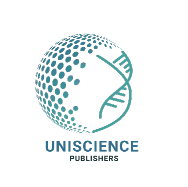The search for quick and sensitive biosensors to detect changes in water quality and identify potentially toxic compounds, as recommendations to reduce fish testing increase. The peroxidase toxicity (Perotox) screen was recently proposed as a quick and sensitive biosensor for toxicity investigation. The purpose of this study was to examine the potential toxicity of environmentally relevant heavy metals cadmium (Cd) and copper (Cu), arsenic (As) and rare earth elements cerium (Ce), gadolinium (Gd), lanthanum (La) and samarium (Sm) using the Perotox screening test. Horseradish peroxidase (Per) without/with exogenously added DNA (DNA protection index) was exposed to increasing concentrations of the above elements for 5 min and its activity assessed. The data revealed that most elements were able to reduce Per activity at different potencies based on the calculated concentration that inhibit Per activity by 20 % (IC20): Cd~Cu>La~Gd>Sm>Ce>As. Inhibitions in Per activity led to oxidation of the monounsaturated detergent Tween 80 in the incubation media. The addition of exogenous DNA prevented Per inhibitions where the following elements show strongest interaction with DNA:Ce, Sm and As. However, the DNA protection index did not always lead to the formation of DNA strand breaks. The Perotox IC20 values were significantly correlated (r=0.6) with the reported 96 h acute lethality in Oncorhynchus mykiss juveniles making it a potential alternative for fish toxicity screening for compliance investigations. In conclusion, a simple, quick and inexpensive enzyme biosensor based on Per inhibitions is presented as a pre-screening methodology for the toxicity of various chemicals to fish.
Keywords: peroxidase, DNA protection, monounsaturated lipid oxidation, alternative methods, rainbow trout.
Citation: Gagné, F. et al., (2025). The Effects of Selected Metals and Rare Earth Elements On the Peroxidase Toxicity Assay. Adv Earth & Env Sci 6(3):1-8. DOI : https://doi.org/10.47485/2766-2624.1069













